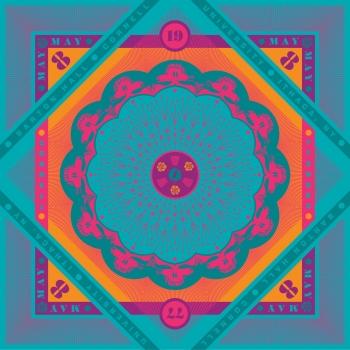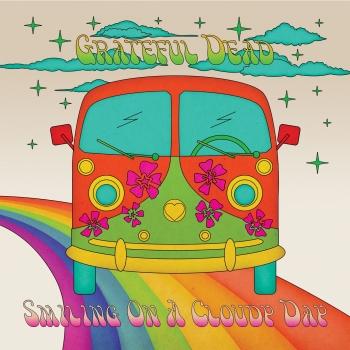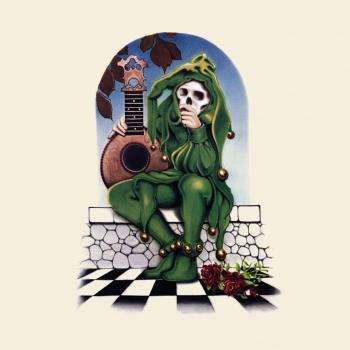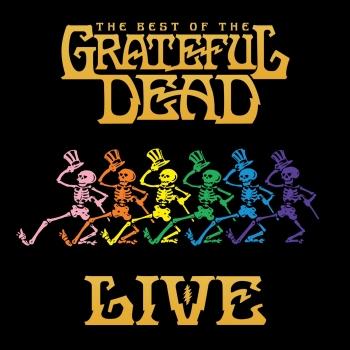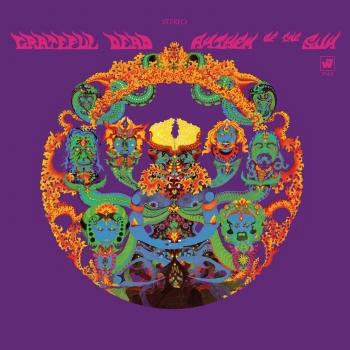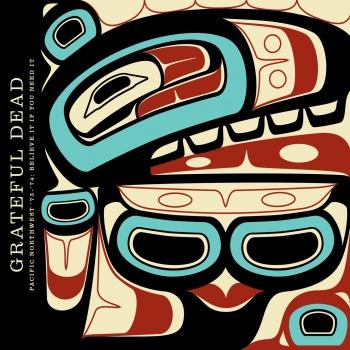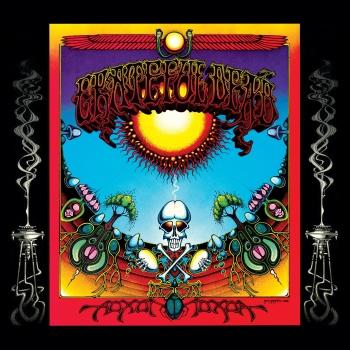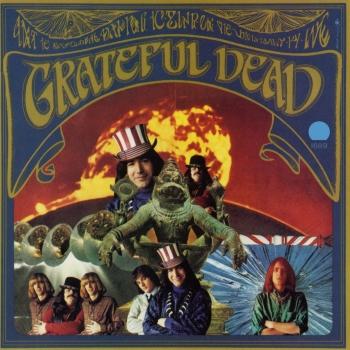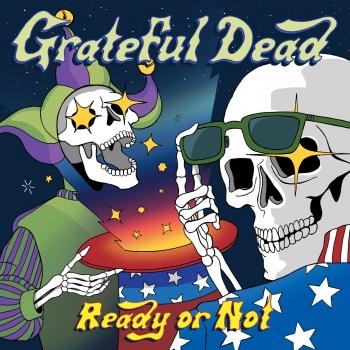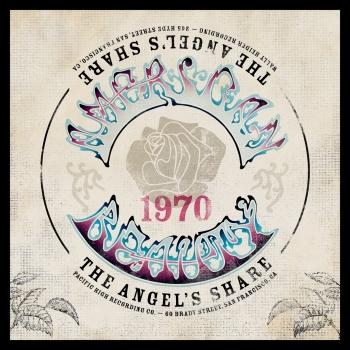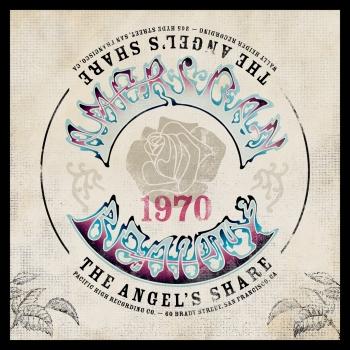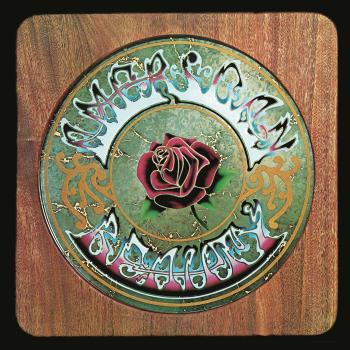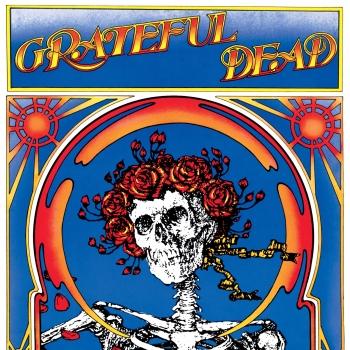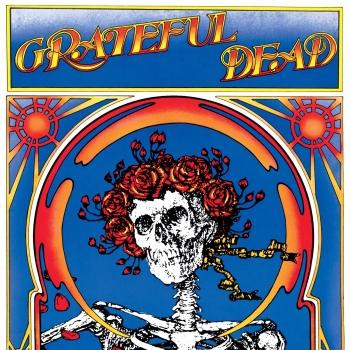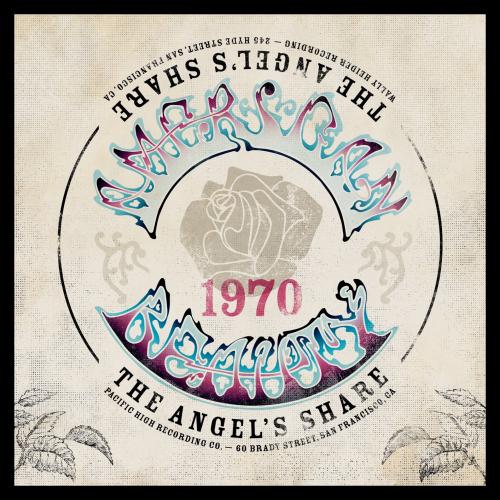
American Beauty: The Angel's Share (Remastered) Grateful Dead
Album Info
Album Veröffentlichung:
2020
HRA-Veröffentlichung:
15.10.2020
Das Album enthält Albumcover
Entschuldigen Sie bitte!
Sehr geehrter HIGHRESAUDIO Besucher,
leider kann das Album zurzeit aufgrund von Länder- und Lizenzbeschränkungen nicht gekauft werden oder uns liegt der offizielle Veröffentlichungstermin für Ihr Land noch nicht vor. Wir aktualisieren unsere Veröffentlichungstermine ein- bis zweimal die Woche. Bitte schauen Sie ab und zu mal wieder rein.
Wir empfehlen Ihnen das Album auf Ihre Merkliste zu setzen.
Wir bedanken uns für Ihr Verständnis und Ihre Geduld.
Ihr, HIGHRESAUDIO
- 1 Friend of the Devil (Demo) 03:29
- 2 Sugar Magnolia (Demo) 03:25
- 3 Candyman (Demo) 05:42
- 4 To Lay Me Down (Demo) 05:44
- 5 Truckin' (Demo) 04:13
- 6 Hand Me Down (Ripple) (Demo) 04:06
- 7 Brokedown Palace (Demo) 03:56
- 8 Till the Morning Comes (Demo) 04:03
- 9 Attics of My Life (Demo) 04:58
- 10 Operator (Demo) 02:23
- 11 Box of Rain (Acoustic Mix) 05:23
- 12 Candyman (Alternate Take) 07:45
- 13 Truckin' (Alternate Mix) 05:40
- Operator:
- 14 Operator (Take 1) (Slated) 03:07
- 15 Operator (Take 2 Breakdown) (Slated) 00:23
- 16 Operator (Take 3) (Slated) 02:48
- 17 Operator (Take 4 Breakdown) (Slated) 00:23
- 18 Operator (Take 5, Misnamed as Take 6) (Slated) 02:53
- 19 Operator (Take 6 Breakdown) (Slated) 00:14
- 20 Operator (Take 7 Breakdown) (Slated) 00:12
- 21 Operator (Take 8) (Slated) 02:43
- Friend of the Devil:
- 22 Friend of the Devil (Take 1 Breakdown) (Slated) 00:21
- 23 Friend of the Devil (Take 2 Breakdown) (Slated) 00:50
- 24 Friend of the Devil (Take 3 Breakdown) (Slated) 00:33
- 25 Friend of the Devil (Take 4 Breakdown) (Slated) 00:32
- 26 Friend of the Devil (Take 5) (Slated) 03:37
- 27 Friend of the Devil (Take 6) (Slated) 03:31
- 28 Friend of the Devil (Take 7) (Slated) 03:42
- 29 Friend of the Devil (Arranging Take 1) (Not Slated) 02:18
- 30 Friend of the Devil (Arranging Take 2) (Not Slated) 01:29
- 31 Friend of the Devil (Arranging Take 3) (Not Slated) 01:05
- 32 Friend of the Devil (Take 9 Breakdown) (Slated) 00:16
- 33 Friend of the Devil (Take 10 Breakdown) (Slated) 00:26
- 34 Friend of the Devil (Take 11) (Slated) 00:35
- 35 Friend of the Devil (Take 12 Breakdown) (Slated) 00:07
- 36 Friend of the Devil (Take 13) (Not Slated) 03:28
- 37 Friend of the Devil (Take 14 Breakdown) (Slated) 00:17
- 38 Friend of the Devil (Take 15) (Slated) 03:31
- 39 Friend of the Devil (Take 16) (Slated) 03:34
- 40 Friend of the Devil (Take 17) (Slated) 03:47
- 41 Friend of the Devil (Take 18) (Slated) 00:39
- 42 Friend of the Devil (Take 19) (Not Slated) 03:34
- 43 Friend of the Devil (Take 20) (Slated) 03:39
- Attics of My Life:
- 44 Attics of My Life (Take 1) (Slated) 05:53
- 45 Attics of My Life (Take 2 Breakdown) (Slated) 00:22
- 46 Attics of My Life (Take 3 Breakdown) (Slated) 02:52
- 47 Attics of My Life (Take 4 Breakdown) (Slated) 00:45
- 48 Attics of My Life (Take 5) (Slated) 05:39
- 49 Attics of My Life (Solo Version) (Demo) 05:14
- Hand Me Down (Ripple):
- 50 Hand Me Down (Ripple) [Take 1 Breakdown] (Slated) 01:12
- 51 Hand Me Down (Ripple) [Take 2 With Vocals] (Slated) 03:37
- 52 Hand Me Down (Ripple) [Take 3] (Slated) 03:42
- 53 Hand Me Down (Ripple) [Take 4] (Slated) 03:45
- 54 Hand Me Down (Ripple) [Take 5 Breakdown] (Slated) 01:32
- 55 Hand Me Down (Ripple) [Take 6 Breakdown] (Slated) 00:41
- 56 Hand Me Down (Ripple) [Take 7] (Slated) 03:36
Info zu American Beauty: The Angel's Share (Remastered)
The musical distillers that recently uncorked Workingman’s Dead: The Angel’s Share have finished another batch of unreleased session recordings by the Grateful Dead. This time, the heavenly sonic elixir will toast the 50th anniversary of American Beauty with over two hours of unreleased studio outtakes, demos, and alternate mixes.
AMERICAN BEAUTY: THE ANGEL’S SHARE brings together never-before-heard studio recordings compiled from dozens of recently discovered 16-track reels. It includes multiple outtakes for several album tracks along with demos for every song on the album (except “Box Of Rain”) plus one for “To Lay Me Down,” which was later included on Jerry Garcia’s first solo album, Garcia. All 10 demos are available today for streaming and digital download with the full 56-track AMERICAN BEAUTY: THE ANGEL’S SHARE to be released as a digital exclusive on October 15, shortly before the 50th anniversary of the album’s original release date: November 1, 1970.
Like its predecessor, the latest incarnation of The Angel’s Share was made possible by the tireless work of engineer Brian Kehew and archivist Mike Johnson who – operating under the supervision of Grateful Dead legacy manager David Lemieux – spent countless hours compiling and piecing the reels together to create this revelatory experience.
AMERICAN BEAUTY: THE ANGEL’S SHARE opens with 10 demos that were recorded in August 1970 at Pacific High Recording Studio, the same place the band recorded Workingman’s Dead just a few months earlier. While fans are accustomed to hearing songs evolve through the band’s live recordings, this installment of The Angel’s Share offers them a rare opportunity to hear songs like “Ripple” (then titled “Hand Me Down”) grow from its first demo into the final version.
The vast remainder of The Angel’s Share features a mix of partial and complete takes from these sessions including multiple takes of “Friend Of The Devil,” “Ripple” and Pigpen’s “Operator,” an alternate mix of “Truckin’” and a different version of “Candyman.” These intimate in-studio performances are interspersed with conversations that make it feel like you’re in the studio with the band (Jerry Garcia, Mickey Hart, Bill Kreutzmann, Phil Lesh, Ron “Pigpen” McKernan and Bob Weir) along with producer Stephen Barncard and engineer Phil Sawyer.
The Angel’s Share is rounded out with an acoustic mix of “Box Of Rain” and a version of “Attics Of My Life” that spotlights Garcia alone on electric guitar, both newly mixed from the band’s recording sessions for the album later that summer at Wally Heider Recording.
As a reminder, the collection takes its name from a term used by whiskey distillers. The “angel’s share” is the percentage of whiskey that’s lost to evaporation each year as the liquid is aged in oak barrels. Much like the whiskey distillation process, there were also ingredients that were vital to the creation of American Beauty that were lost and did not end up on the final album, the band’s own version of the “angel’s share”. If not for good fortune, these recordings would have been lost to the angels as well, just like those gallons of whiskey. In this case, everyone gets a taste of the “angel’s share.”
To coincide with the latest Angel’s Share release, “The Good Ol’ Grateful Deadcast,” the official Grateful Dead podcast, has launched the first episode from its second season today. Produced and hosted by singer-songwriter and producer Rich Mahan and author and WFMU DJ Jesse Jarnow, the Deadcast’s sophomore season will focus exclusively on American Beauty with each weekly episode concentrating on one of the album’s 10 songs, kicking off today with “Box Of Rain,” which features a special appearance by director/writer Paul Feig (Bridesmaids, Ghostbusters), who prominently featured American Beauty in the legendary final episode of Freaks & Geeks.
Season two of “The Good Ol' Grateful Deadcast” will welcome American Beauty producer Barncard along with David Grisman, David Nelson, and many of the other musicians who contributed to the album, along with appearances by road manager Sam Cutler, writer Steve Silberman, Dead Head sociologist Rebecca Adams, New Yorker staff writer Nick Paumgarten, and many more.
“The Good Ol’ Grateful Deadcast” launched this summer and quickly became one of the most popular music podcasts, with multiple episodes from season one topping Apple Music’s Music Podcast Chart.
AMERICAN BEAUTY: THE ANGEL’S SHARE is a special gift to Dead fans and a fitting companion to the 50th Anniversary Deluxe Edition of American Beauty, which will be released on October 30 as a triple album set. The collection is part of the band’s ongoing series of deluxe editions and features a newly remastered version of the album plus an unreleased show recorded on February 18, 1971 at the Capitol Theatre.
Grateful Dead
Digitally remastered
From the 1960s until the 1995 death of guitarist, singer-songwriter Jerry Garcia, the Grateful Dead played roughly 2,300 long, freeform concerts that touched down on their own country-, blues and folk –tinged songs, and on a similarly wide range of cover versions. Along the way, they popularized the concept of the jam band, influencing thousands of songwriters and basement improvisers and earning themselves maybe the most loyal fans a rock band have ever had.
Nearly as famous as the band itself were its legions of "Deadheads" — predominantly white men who have lovingly preserved the era that spawned the Dead by emulating their Summer of Love predecessors' philosophy and that period's accoutrements: tie-dye clothing, hallucinogenic drugs, and the Dead's music. These fans supported the band with an almost religious fervor, following the group around the country, trading tapes of live concerts (something the band allowed as long as it wasn't for profit, providing prime spots for tapers at shows), and providing a synergy between band and audience that was unique in rock. In true psychedelic style, the Grateful Dead preferred the moment to the artifact — but to keep those moments coming, the Dead evolved into a far-flung and smoothly run corporate enterprise that, for all its hippie trimmings, drew admiring profiles in the financial and mainstream press.
Lead guitarist Jerry Garcia took up guitar at 15, spent nine months in the Army in 1959, then moved to Palo Alto, where he began his long-standing friendship with Robert Hunter, who late became the Dead's lyricist. In 1962 he bought a banjo and began playing in folk and bluegrass bands, and by 1964 he was a member of Mother McCree's Uptown Jug Champions, along with Bob Weir, Ron "Pigpen" McKernan, and longtime associates Bob Matthews (who engineered Dead albums and formed the Alembic Electronics equipment company) and John Dawson (later of New Riders of the Purple Sage).
In 1965 the band became the Warlocks: Garcia, Weir, Pigpen, Bill Kreutzmann, and Phil Lesh, a former electronic-music composer. With electric instruments, the Warlocks debuted in July 1965 and soon became the house band at Ken Kesey's Acid Tests, a series of public LSD parties and multimedia events held before the drug had been outlawed. LSD chemist Owsley Stanley bankrolled the Grateful Dead — a name from an Egyptian prayer that Garcia spotted in a dictionary — and later supervised construction of the band's massive, state-of-the-art sound system. The Dead lived communally at 710 Ashbury Street in San Francisco in 1966–67 and played numerous free concerts; by 1967's Summer of Love, they were regulars at the Avalon and Carousel ballrooms and the Fillmore West. MGM signed the band in 1966, and it made some mediocre recordings. The Dead's legitimate recording career began when Warner Bros. signed the band. While its self-titled 1967 debut album featured zippy three-minute songs, Anthem of the Sun (Number 87, 1968) and Aoxomoxoa (Number 73, 1969) featured extended suites and studio experiments that left the band $100,000 in debt to Warner Bros., mostly for studio time, by the end of the 1960s. Meanwhile, the Dead's reputation had spread, and they appeared at the Monterey Pop Festival in 1967 and Woodstock in 1969.
As the Seventies began, the Dead recouped its Warner debt with three comparatively inexpensive albums — Live/Dead (Number 64, 1969) (recorded in concert at San Francisco's Fillmore West in February and March of 1969), Workingman's Dead (Number 27, 1970), and American Beauty (Number 30, 1970). The former featured extended psychedelic explorations, such as the classic "Dark Star," while in sharp contrast the latter two found the Dead writing concise country-ish songs and working out clear-cut, well-rehearsed arrangements. Workingman's Dead (including "Uncle John's Band" [Number 69, 1970] and "Casey Jones") and American Beauty (including "Truckin'" [Number 64, 1971], "Ripple," and "Box of Rain") received considerable FM radio airplay, sold respectably, and provided much of the Dead's concert repertoire.
With a nationwide following, the Dead expanded its touring schedule and started various solo and side projects (aside from the band members' own works, many Dead members also appeared on the half-dozen-plus albums Dead lyricist Robert Hunter began releasing in 1973). The group worked its way up to a 23-ton sound system and a large traveling entourage of road crew, family, friends, and hangers-on — most of whom would later become staff employees complete with health-insurance and other benefits, as the Dead evolved into an efficient and highly profitable corporation. The Dead finished out its Warners contract with a string of live albums including 1971's Grateful Dead, a.k.a. "Skull and Roses" (Number 25), which introduced more concert staples such as "Bertha" and "Wharf Rat." In 1973 the Dead played for over half a million people in Watkins Glen, New York, on a bill with the Band and the Allman Brothers. By then the group had formed its own Grateful Dead Records and a subsidiary, Round, for non-band efforts.
Read more: http://www.rollingstone.com/music/artists/the-grateful-dead/biography
Dieses Album enthält kein Booklet










